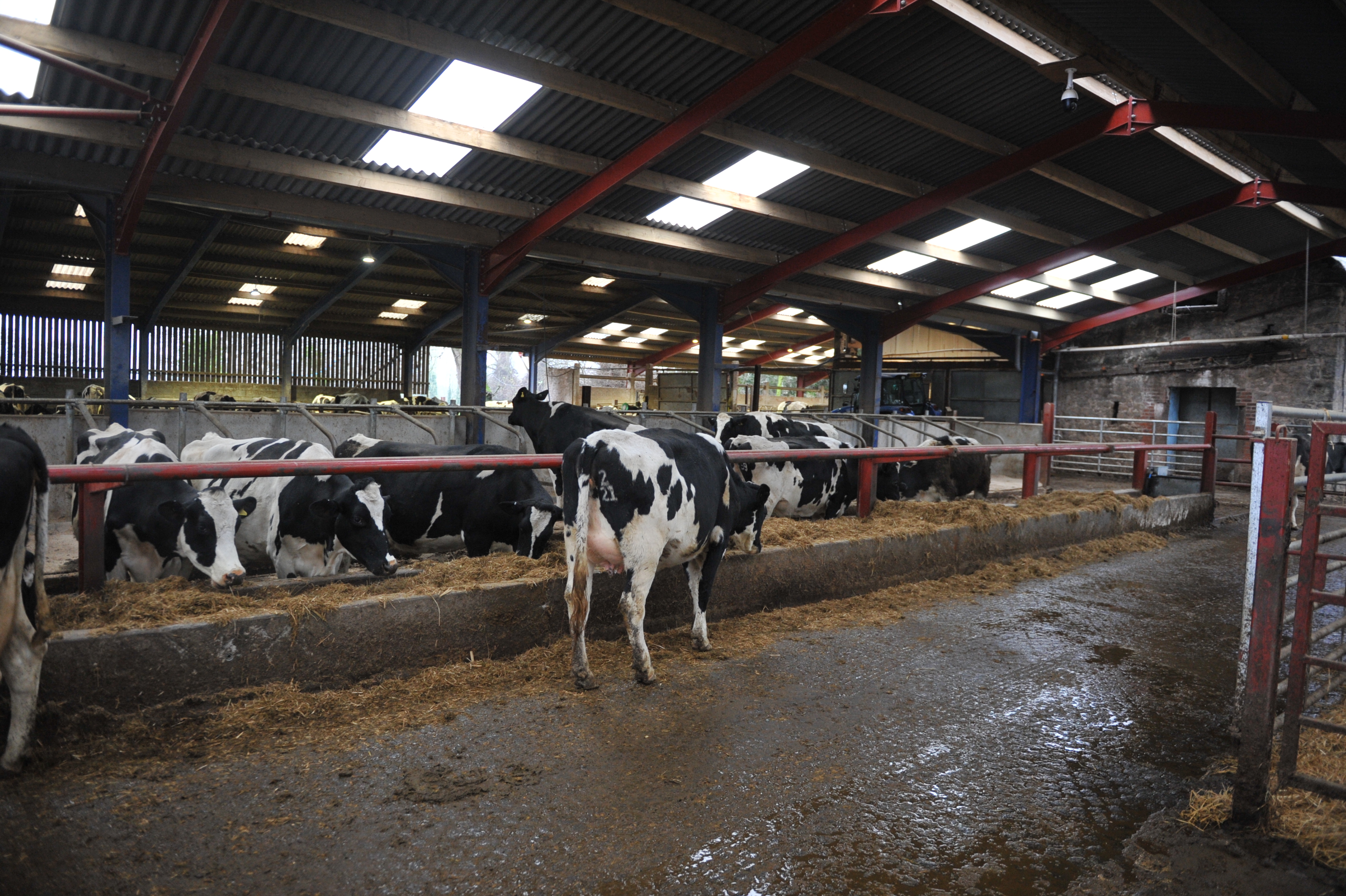- Home
- Transition cow management
Transition cow management
At their second event as a strategic dairy farm, John and Anna Booth, along with Phil Clarke from P&L Agri Consulting Ltd and farm vet Mo Kemp of Wern Vets, took us through the changes they have made to improve cow health in the transition period at Rhual Dairy.
Before 2018, John and Anna Booth's transition cow accomodation only had space to manage cows on a transition ration for two weeks. In 2018 they replaced this system with a shed that had capacity to house dry cows for four weeks. Since the changes were put in place, they have seen better fertility with cases of retained foetal membranes down to 2%, left displaced abomasums to 1% and milk fever to less than 1%.
They have also invested in a new diet mixer which chops straw to the shorter length required in the transition ration. The dry cow ration at Rhual is formulated to deliver 120 megajoules (MJ) of energy per cow and consists of up of 18kg third cut silage, 6kg haylage bales, 6kg maize silage, 3.5kg chopped straw, 2kg protein blend and 0.150kg dry cow minerals.
John and Anna believe careful management of the transition period is crucial to secure milk yields, fertility and profitability in the following lactation.
They also recognised that 60% of mastitis was contracted during the transition stage.
Importance of the dry period
Farmers at the event were advised to consider the dry period as the start of the next lactation, not the end of the last one.
Phil Clarke of P&L Agri Consulting Ltd, described the dry period as the single most important phase of production. Mr Clarke suggested that the dry cow diet is often overlooked:
- Cows need to develop a good appetite and rumen capacity in the close-to-calving period
- Maximise trough space – ideally 90cm/cow
- Target 40-45% dry matter (DM) in the diet – add liquid to the ration if it is higher than this
- Aim for a DM intake of 12-14kg, Mr Clarke advised. “The more they eat as dry cows, the more they will give you as milk in their lactation’’
- P&L recommends an energy intake of 115/120MJ/cow/day and 13-5-15.5 protein
- Potassium should be kept as low as possible - this can be helped by specific dry cow sileage that has no slurry applied - achieved by separating fields in the application
- Magnesium to potassium ratio should be at a maximum of 1 to 4 – if the ratio is greater then add more magnesium to the ration
- Cows need plenty of room to move around to exercise and to build muscle strength; cow comfort must be exceptional and a good supply of clean water will encourage the cow to eat more.
Energy levels in transition period
Videos from the day
Dr Mo Kemp, the farm vet at Rhual Dairy, advised farmers to monitor the energy levels of cows pre-calving by checking urine pH and ketone levels.
- Maintain body condition score (BCS) at 2.5-3 – it should be the same at drying off as at calving
- Don’t use the dry period to get cows slimmer, any changes should be made in the lactation
- Body condition score monthly and consider increasing it to fortnightly in the dry period
- Drying off should be a specific task, not a job done at the end of milking, and an exceptional level of cleanliness is vital
- Use surgical spirit and cotton wool, not the wipes that come with the tubes, and allow the cows to stand for 30 minutes after drying off
- Inspect cows daily in the first week after drying off, she added.
Useful links
Find out more about Rhual Dairy and compare your performance


.JPG)


